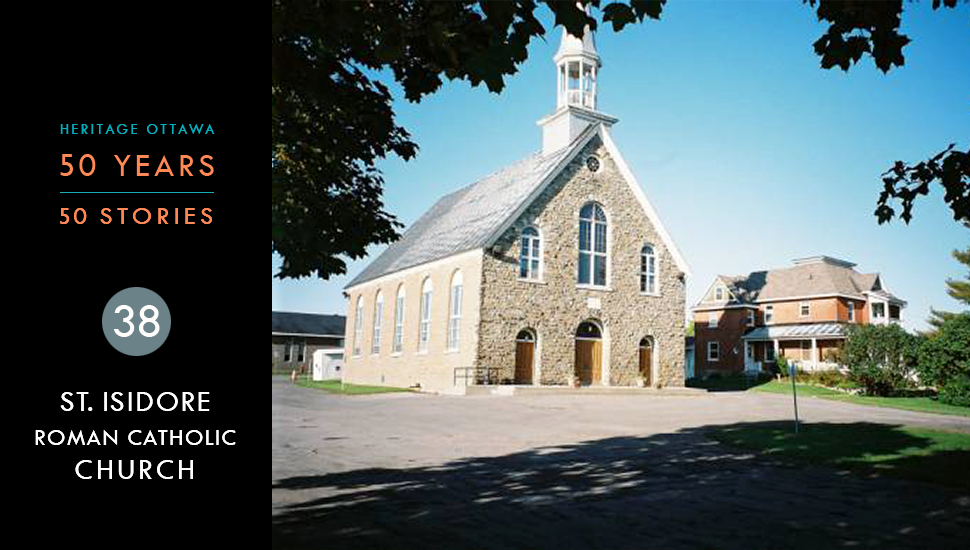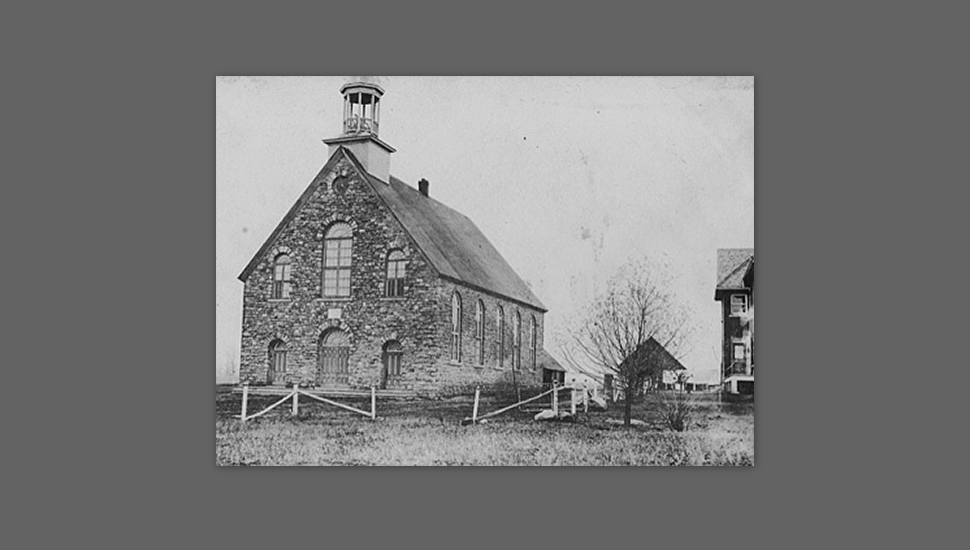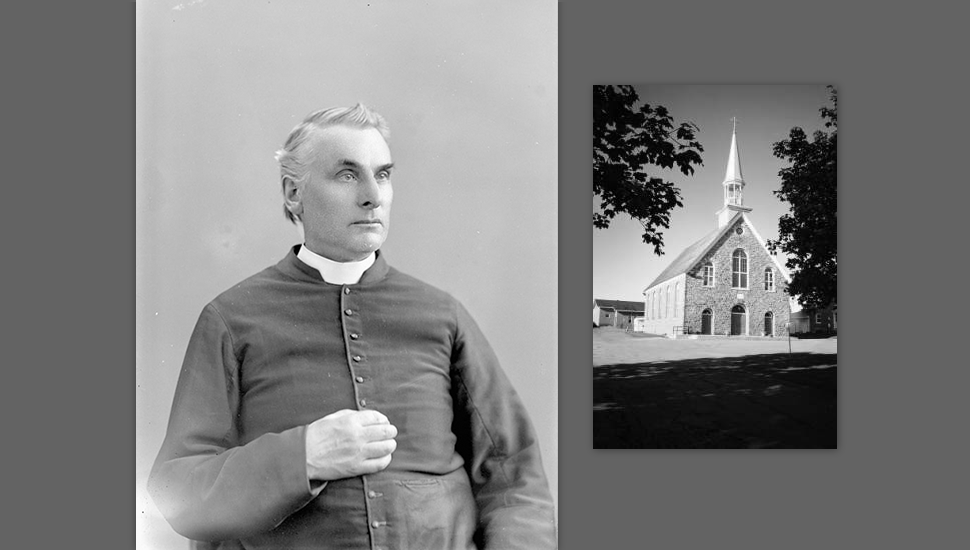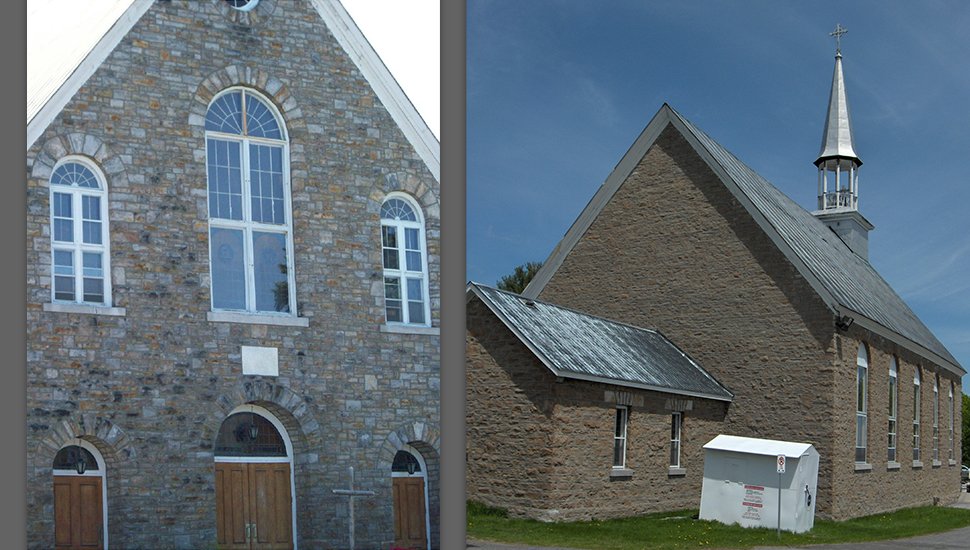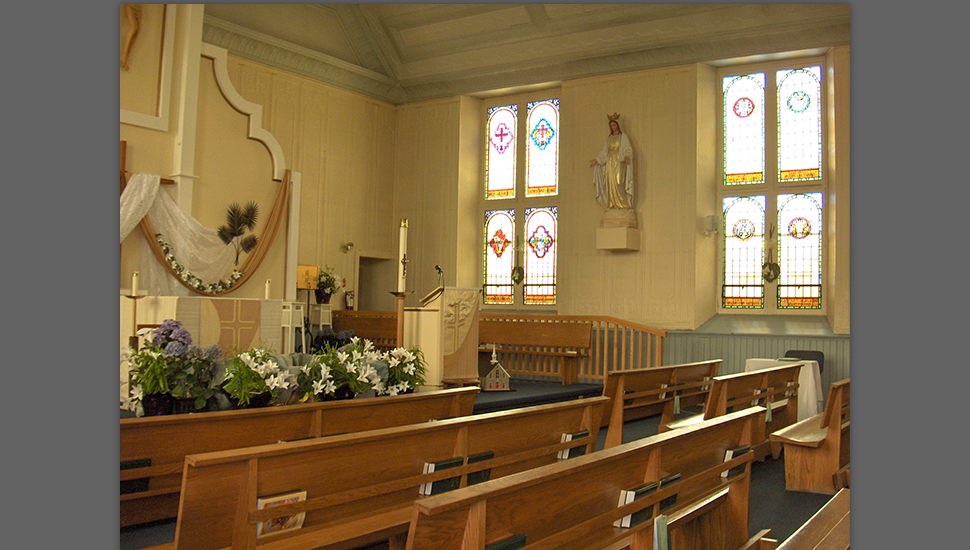38. St. Isidore Roman Catholic Church
Construction: 1887
Demolition: 2010
Architect: Canon Georges Bouillon (1841-1932)
Location: 1135 March Road, Ottawa
The first church built to serve Catholic families in the former township of March was a modest cedar log chapel, erected in 1836 on the John Lahey farm bordering March Road. By 1884 there were 97 families in St. Isidore parish, warranting a new church building.
In 1885, priest-architect Canon Georges Bouillon (1841-1932) was approached to design a permanent stone church. He chose the French Classical style made popular by architects in Lower Canada. The church was completed and blessed by Archbishop Joseph Thomas Duhamel on October 9, 1887.
St. Isidore’s Roman Catholic Church had a gabled façade with a semi-circular arched central entrance flanked by two shorter entries with similar arches. On the gallery level, semi-circular arched windows were symmetrically positioned above each of the entries. The rubble walls were built of squared uncoursed Nepean sandstone with regular stone quoining employed at the angles. A clocher sat on the east end of the steep gable roof.
A bell was installed in the clocher in 1891 and a 2 ½ storey brick veneer rectory north of the church was completed in 1899, which still survives.
Numerous changes occurred over the years, including the installation of 36 memorial windows in coloured glass, blessed by Archbishop Alexandre Vachon on May 5, 1940 to mark the centenary of the parish.
In the early 1990s, the growing number of parishioners and the lack of a narthex, washrooms, and baptismal font prompted discussions about redevelopment. The St. Isidore Expansion Task Force was established in 2005 to consolidate the work of previous committees and make recommendations on expanding the church. Every member of the Task Force was committed to saving the existing church structure.
A $7.1 million proposal that included additional facilities and expanded worship space, but retained only half of the existing church, was considered beyond the parish’s fund-raising capacity and was rejected.
A request to designate St. Isidore Church was submitted to City of Ottawa in July, 2008.
In May 2009, conservation architect and Heritage Ottawa board member Ken Elder inspected St. Isidore Church to determine its heritage qualities and condition. The only issues found were maintenance-related — a crack on the west wall, which needed monitoring, and standing water in the crawl space, attributed to asphalt paving that was directing water to the outer walls.
Shortly after Mr. Elder’s visit and the day before a City engineer was scheduled to inspect it, the church steeple was removed “for safety reasons” without permit approval. The church bell was salvaged.
On May 26, 2009, the Local Architectural Conservation Advisory Committee (LACAC) unanimously recommended that Council approve the heritage designation, despite strong opposition from the St. Isidore Expansion Task Force. Heritage Ottawa board members spoke at the LACAC meeting in support of the church’s designation.
At a meeting of the Agriculture and Rural Affairs Committee (ARAC) two days later, the appearance of numerous parishioners, Des Adam (Deacon and former Mayor of Kanata), and the Archbishop of Ottawa, had its effect. ARAC recommended demolition with the condition that “the expanded church includes: the stonework, the stained glass windows and the bell, that forms part of the existing church as well as a replica of the former steeple.”
City Council rejected the LACAC recommendation for designation and instead carried the ARAC recommendation.
Demolition of the 1887 St. Isidore Roman Catholic Church began in August 2010. The new church, designed by architect Ralph Vandenberg, was built at a cost of $5.5 million and officially dedicated on January 14, 2012 by Archbishop Terrence Prendergast.
Despite the stated intentions, none of the original stone was incorporated in the new building.
The historic St. Isidore Roman Catholic Church was a rare surviving example of Canon Georges Bouillon’s work in Ontario, and the only example of his use of the French Classical style in the province.
